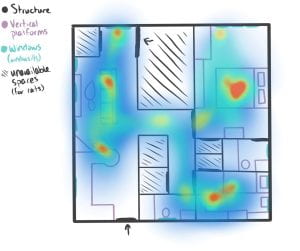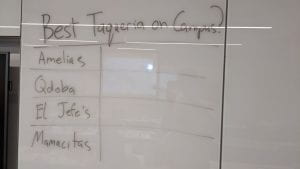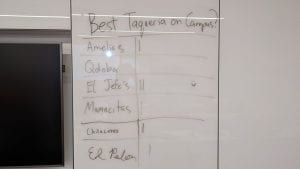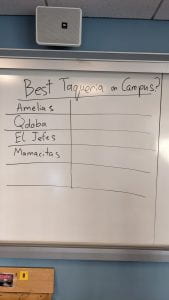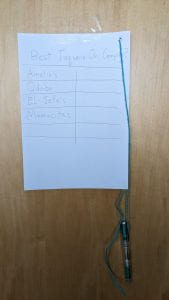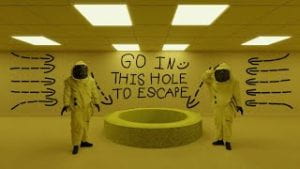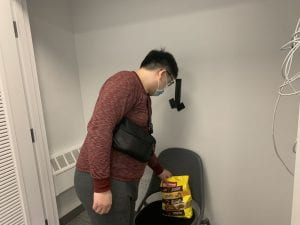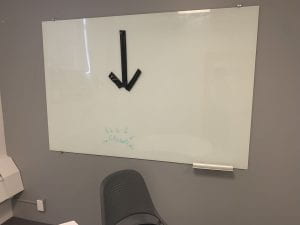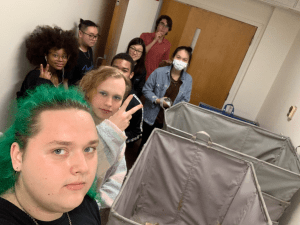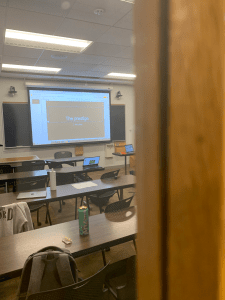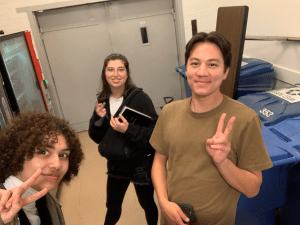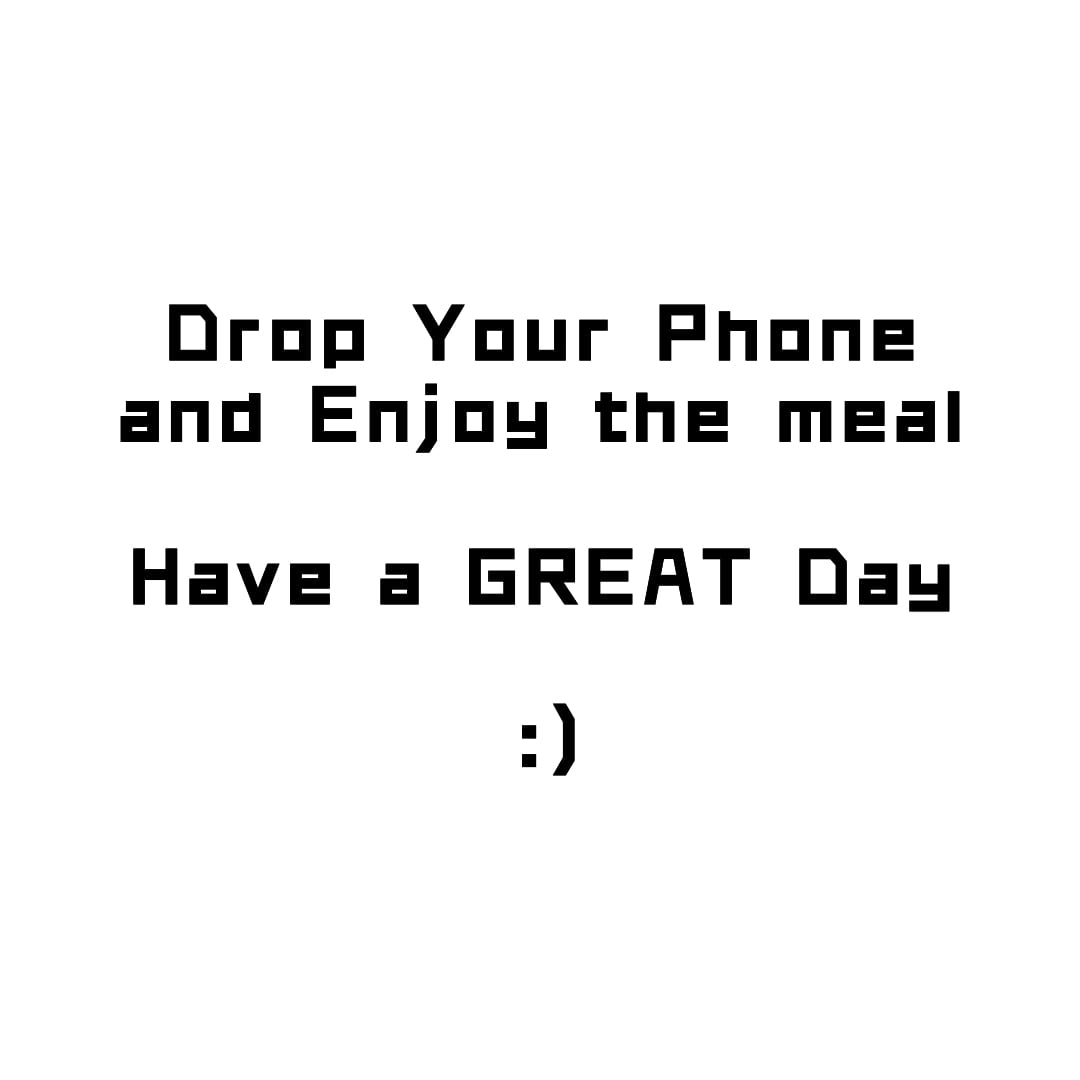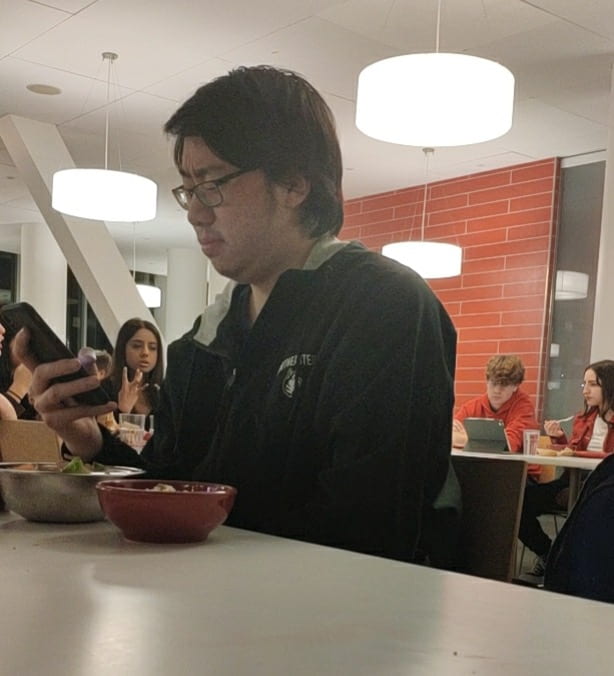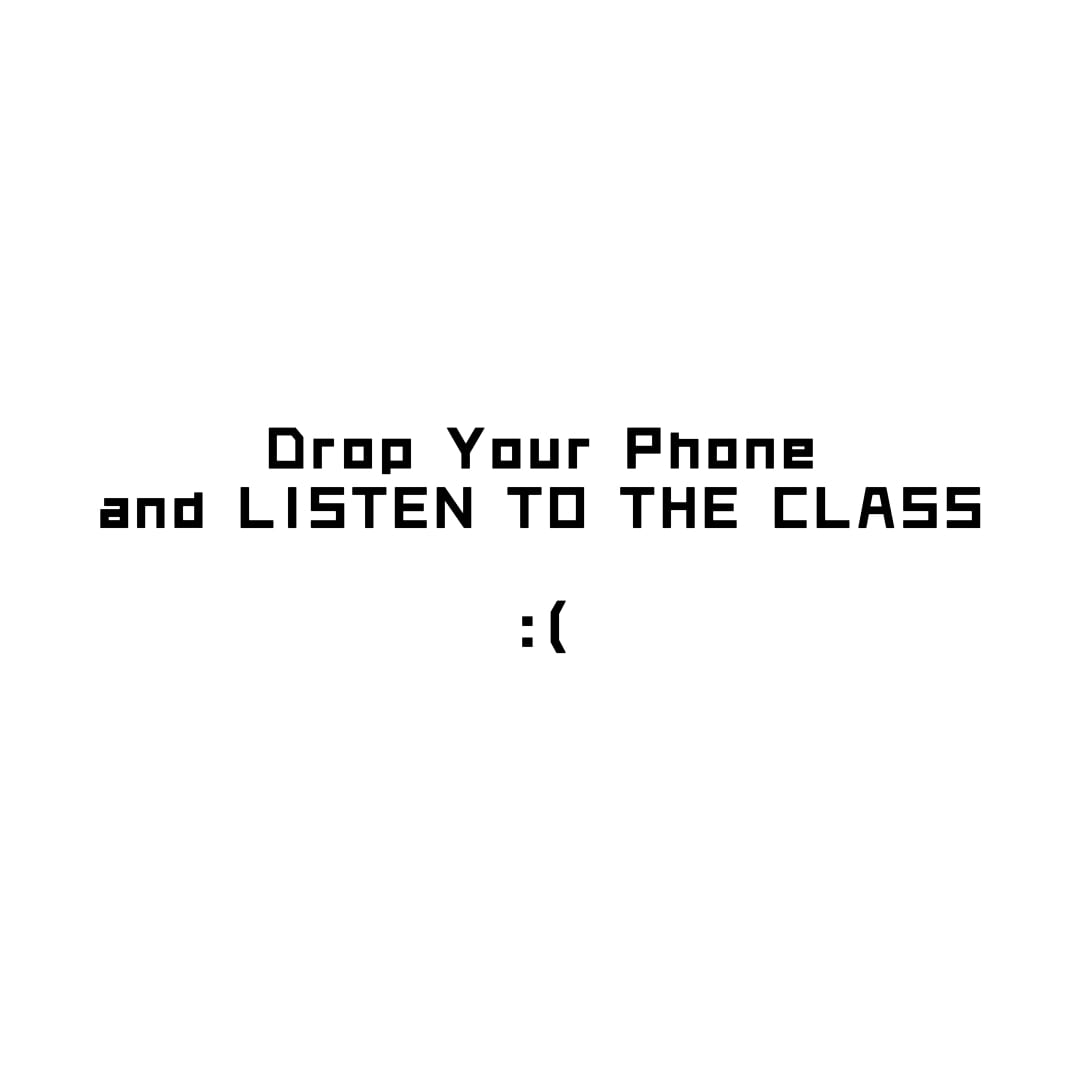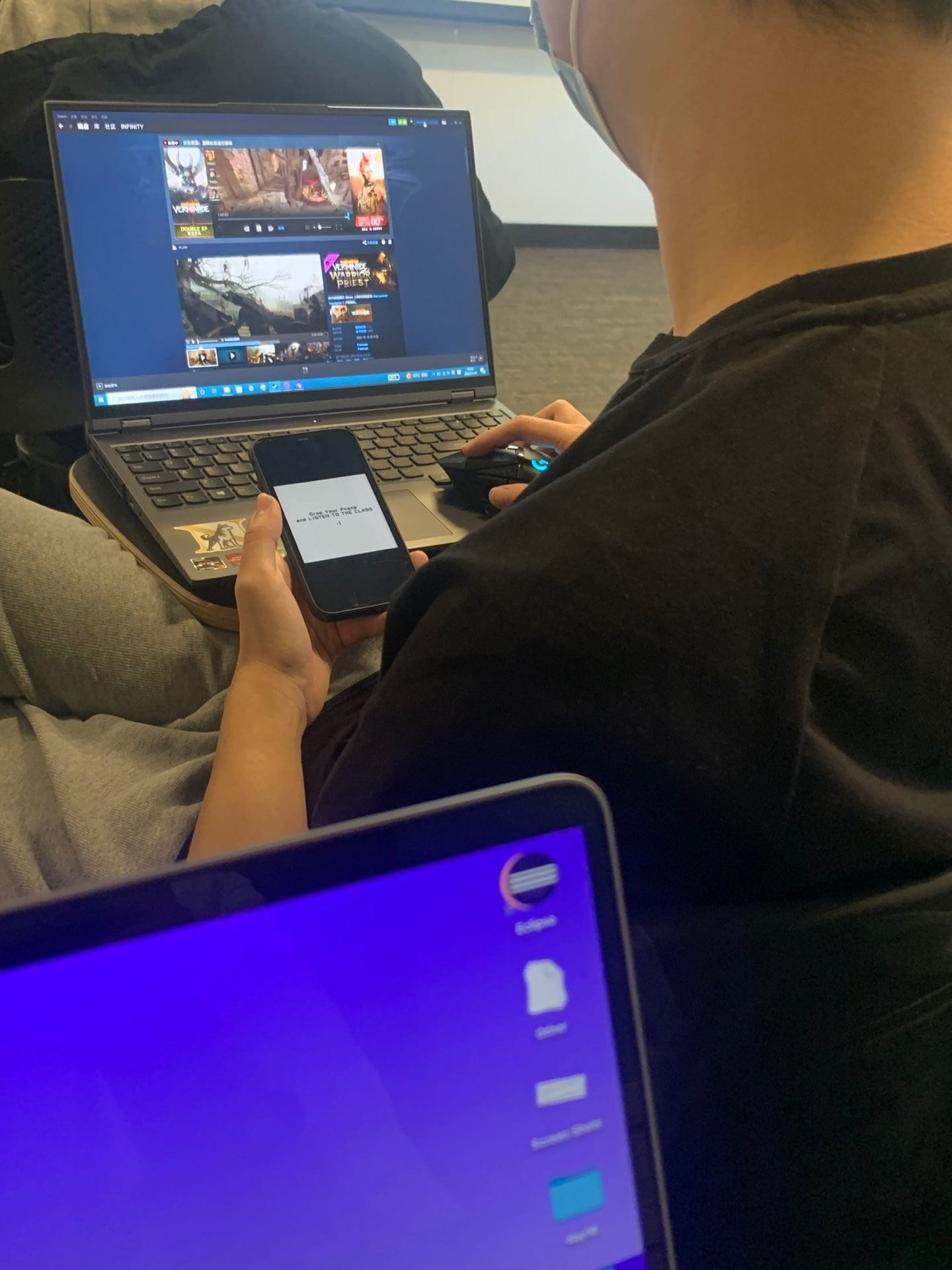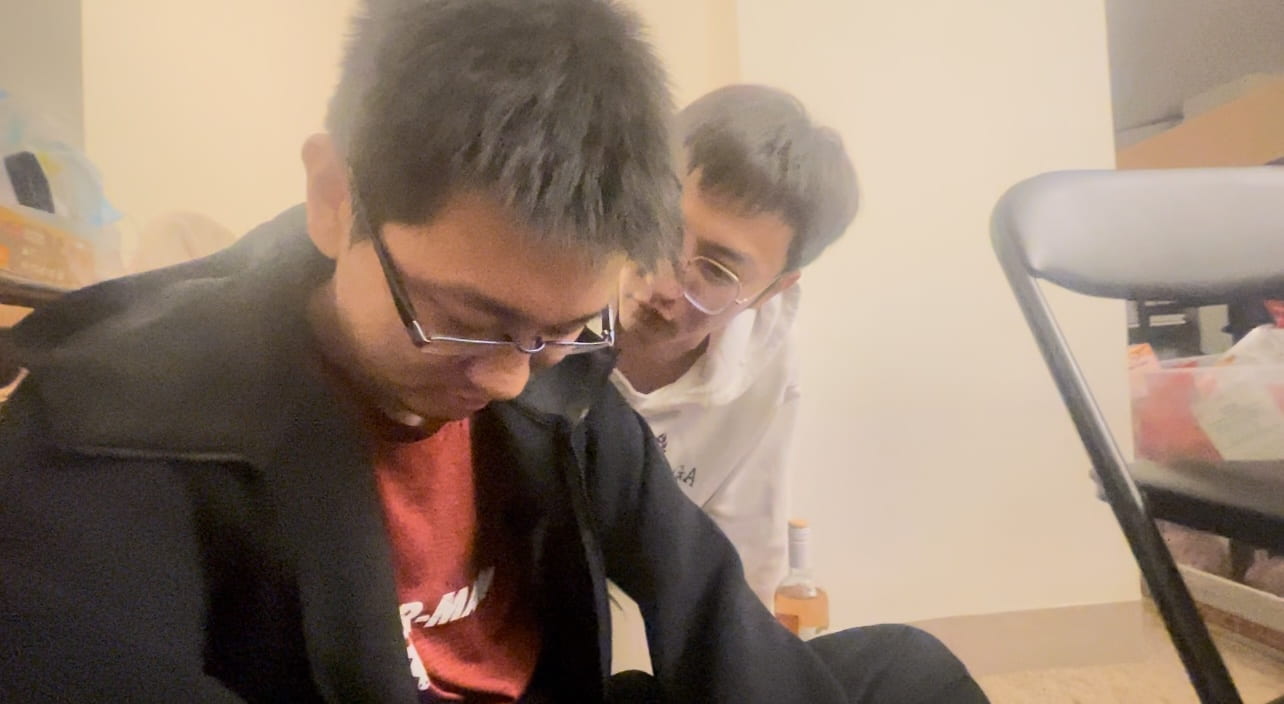Score
- Attend a class presentation
- Actively listen to the presenter
- Once presentation is finished, stand up and give a round of applause and verbally compliment the presenter
- Sit back down as if nothing happened
- Repeat steps 1-4 for each presentation
Artist Statement
Our intervention, Standing Ovation, was heavily inspired by Uncle Roy All Around You which served as a commentary on our willingness to help out strangers. The essential question “Would you be there for a stranger in need?” was asked to Uncle Roy participants and if they answered yes, then a couple of weeks later they would then have to help out a stranger in need. This idea of encouraging people to support those they are not close to inspired us to think about environments where we are surrounded by strangers/acquaintances. Almost instantly, we brought up our classes and how we feel removed from the lives of classmates that we sit next to. When you’re simply listening to a lecture that feeling is irrelevant but once you have to present, the lack of a comforting face can sway your confidence. It feels like no one is actively listening to you speak since you’re not friends with them, so our main goal was to stage an intervention that revolves around changing this common feeling. Presenting isn’t something everyone is comfortable doing, so when your audience shows that they are listening to you and clap at the end can be reassuring and encouraging for future presentations.
We were also inspired by Eric Andre’s and Impractical Joker’s ‘interventions’ in society and how they influence the bystanders around them. We wanted to explore how our intervention, standing ovation, would affect our fellow classmates. Specifically, mob mentality, which is the inclination that in certain large group situations, humans often neglect their own individual feelings and in the process adopt the behaviors and actions of the people around them. As this iteration of Standing Ovation was performed by two individuals, the likelihood of this mob mentality taking place significantly increased. At the end of Max’s presentation, we acted on the game rules and gave a standing ovation. We observed a massive increase in class applause/engagement than in prior presentations where the standing ovation did not take place. Funny enough, when the ‘late-comers’ entered the classroom soon after, the entire class ended up giving them a standing ovation. In future iterations of the game, we plan to explore individual scenarios where only one player is aware of the game rules.


